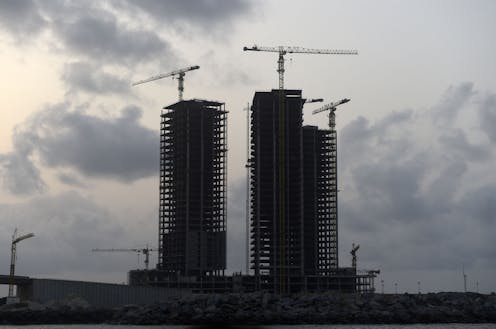
Since 1972, when the first world conference on the environment was held, there have been various responses to environmental problems. One of these is the introduction of environmental impact assessments. These are vital in environmental decision-making. They ensure that environmental and sustainability issues are integrated into development planning.
In Nigeria, these assessments are primarily governed by the Environmental Impact Assessment Act 1992. Under this law, an environmental impact assessment is required for development projects that are likely to have significant adverse effects on the environment.
But the assessments are not often carried out. Developments that are clearly detrimental to the environment still take place. Land reclamation, for instance, frequently happens without an assessment of its impacts. This has led to the loss of wetlands in many parts of Nigeria.
Consequently, the effectiveness, availability, impact and process of environmental assessments in Nigeria have been called to question.
I examined the weaknesses in the Nigerian system for my doctoral research. I analysed the Environmental Impact Assessment Act, as well as environmental impact assessment reports of development projects, against international best practice principles and policies. In particular I examined whether the law and practice effectively guarantee people’s right to information, participation and justice.
Nigerians receive little or no information about the environmental assessment of development projects, I found. They seldom participate in making decisions about projects, and are unable in practice to seek redress from the courts or other administrative bodies.
This led me to conclude that the law and the practice of environmental impact assessments in Nigeria don’t facilitate procedural environmental justice. In other words, they do not ensure that decisions affecting the environment are made impartially and transparently.
Recent developments make it necessary to consider also the implications of the Environmental Impact Assessment Act on environmental protection and sustainable development.
Weaknesses of the Act
The Environmental Impact Assessment Act prohibits private persons and public bodies from undertaking or authorising projects without consideration of their effects on the environment.
In practice, however, it is common for development projects to commence without an environmental impact assessment.
And even where an assessment is carried out, there may still be violations of the provisions relating to the right to information and participation. The dredging of the lower River Niger is a case in point. The environmental impact assessment of this project was undertaken during the course of the work. And some members of affected communities were neither consulted nor provided with the assessment report.
Perhaps one reason for non-compliance with the law lies in its enforcement provision. The prescribed monetary penalty is grossly inadequate. Offending individuals are liable to a fine of 100,000 naira (about US$238). Firms or corporations can be fined between 50,000 naira (about $119) and one million naira (about $2,384).
Not only are the penalties too low to compel compliance, they are hardly ever imposed on offenders.
My research showed that it’s not enough for the legislation to list the factors to be considered and the conditions to be fulfilled before a decision on a proposed activity is reached.
A lot more than these basic requirements is needed.
The rights of those affected by development projects need to be recognised.
Firstly, access to information about projects is key. The Environmental Impact Assessment Act requires that information provided as part of the environmental impact assessment process is made available to the public. But this does not ensure that the public is effectively informed about the assessment.
For example, environmental information is often written in technical language, requiring expert interpretation. And no arrangements are made for information to be shared in special formats such as large print and braille. This means people don’t have substantive access to information.
Secondly, public participation in decision-making leaves a lot to be desired. The act says the public has a right to participate in the making of environmental decisions. But it doesn’t prescribe how.
In practice, public participation takes the form of an information dissemination and data gathering activity. It does not function as a process through which the public can influence decision-making.
In addition, opportunities for public participation are often made available very late in the process, when key decisions on the size, location and type of project have already been taken. Involving the public at a late stage of the project may only amount to public relations. This can be used to justify already made decisions or avert conflict, but not to give due consideration to the public input.
Finally, Nigeria’s Environmental Impact Assessment Act is problematic because it does not guarantee access to justice. It does not make provision for an administrative review of the regulatory agency’s decisions. Aggrieved members of the public can only seek redress in the courts. But this is expensive and time consuming. Litigation can sometimes provide inadequate remedies too.
Next steps
Nigeria’s Environmental Impact Assessment Act needs to be amended to bring it in line with international best practice. New policies must ensure that beyond their economic benefits, the environmental and social impacts of development projects are taken into account.
Finally, the people’s right to information, participation and justice must be respected throughout the environmental impact assessment process.
Synda Obaji previously received funding from the Niger Delta Development Commission, Nigeria.
This article was originally published on The Conversation. Read the original article.







